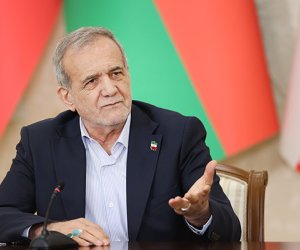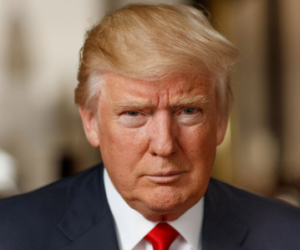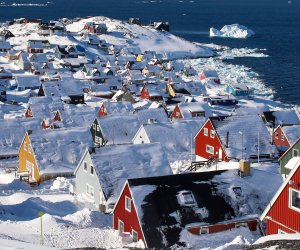Mongolia: 'The Gobi desert is a horrible place to work'

Wrapped in heavy workwear, his eyes shielded by dark goggles beneath his hard hat, Amarsanaa Batsuren strides across this remote and unlovely stretch of desert. He is on his way to inspect an ugly gash in the earth, 500m by 800m and growing fast. "Brilliant, innit?" he says, and flashes a grin.A year ago, Amarsanaa was ensconced at home in London's Victoria. This opencast mine has lured him back to Mongolia after 20 years in the capital. "The Gobi's a horrible place to work. But this job – this all ends up as Mongolia's food," he says, his voice tinged with pride. We are standing on an estimated 6bn tonnes of coking and thermal coal. Tavan Tolgoi, believed to be the world's largest such deposit, is one of the mammoth mineral veins that could transform a country where a quarter of the population are still nomadic herders.In the last few years, this vast but sparsely populated nation – four times the size of the UK, with fewer than 3 million inhabitants – has seen an astonishing boom. The impoverished former Soviet satellite, best known for cashmere and Genghis Khan, has enjoyed double-digit growth and even more spectacular hype. In 2010, the Mongolian stock exchange grew 121%; the following year, GDP shot up by over 17%. The IMF estimated that by 2021 the copper and gold produced at Oyu Tolgoi – a multibillion project jointly owned by Mongolia and Rio Tinto-controlled Turquoise Hill – could account for 30% of the country's economy. It earned the nickname Minegolia.Not everyone celebrated. The advent of such huge schemes sparked soul-searching about their social and environmental cost. Some warned of "the resource curse", with a rush of foreign money creating a rising real exchange rate that hits other sectors. Others feared outsiders would reap all the profits.Tough new laws restricting foreign investment in strategic assets and an attempt to renegotiate the Oyu Tolgoi deal – along with the slowing of the Chinese economy, which has powered the Mongolian surge – saw foreign direct investment plummet by 54% last year. The IMF had predicted almost 23% growth; the actual rate was half that.To drive north through the Gobi and across this immense, largely untamed land, towards the capital's glassy new towers, is to trace a country in transition and uncertain of its trajectory. The highway to Ulan Bator has longish stretches of brand-new black asphalt and steamrollers at work on bulldozed sections in between; then we are back on the rutted track that swerves across the grasslands, past camel herds and beneath soaring eagles. A wide, shimmering rainbow hangs over a distant mountain.We begin at Tavan Tolgoi, where Amarsanaa and his colleagues live in an encampment of gers, the white, round, felted tents of herders. The stars are still out as the men stamp off to relieve the night shift. They produce 350 to 450,000 tonnes a month, and even working round the clock they could be here for a century or more. Excavators carve out five tonnes in a single scoop. The wheels of 300-tonne coal trucks dwarf the burly men beside them. The new pit, already 27 metres deep, will soon descend to 10 times that.Mongolians are tough, Amarsanaa says, proudly; suited to such a harsh environment. But only a few hundred work here. Modern mining creates few jobs; what matters is how Mongolia spends the wealth it creates. "Digging it out is difficult, but managing it is the hardest," Amarsanaa says.From Tavan Tolgoi, the coal trucks rumble south to China, churning up dust and unsettling Uyanga Damchaa's animals. "Maybe the people who own those mines are getting benefit from it – I don't know. But what the people who live here see is the whole area being dug out; holes here, holes there," says the 22-year-old.Everyone else has moved, she adds. Soon she will follow suit, with her little girl Duurenjargal and the rest of their family. "It's just impossible to live here," says her father, Batjargal. "It's not a nice thing when they destroy your pasture. I know this mountain, for instance, has spirits."The compensation has been meagre. At the last parliamentary election, parties wooed voters with cash handouts – funded by pre-selling Tavan Tolgoi's coal. Since the costs of mining and transport then rose, "what they were promising in the elections – everything to every citizen – was all a loan from China and now we are paying the debt. In the long run probably nothing will be left for the future of Duurenjargal. It's kind of bleak," he says.Such concerns have pushed a few to radical solutions. In January a Mongolian court jailed environmentalist Tsetsegee Munkhbayar and other "Fire Nation" activists for 21 and a half years each after they were accused of placing bombs near Government House and opening fire while delivering a petition on limiting mineral exploitation. (Others say the grenades were inactive and police initially confirmed that the only shot was fired accidentally.)Yet Tavan Tolgoi's pits, vast as they are, are a speck on the Gobi. And officials argue they are managing development more carefully than ever. "Seven years ago, 42% of the country's territory was covered by exploration and mining licences – now it's down almost to 10%," says Oyun Sanjaasuren, minister for the environment and green development. "Rather than hundreds and hundreds of small mines, it is probably better to have a smaller number of larger, responsible projects," which the government can monitor more easily.Batjargal concedes he might even move back if plans for a railway to transport the coal are carried through.The infrastructure drive is already showing results; as we drive north, new power lines march across the desert beside us. From a distance, the landscape seems otherwise unchanged: vast, sweeping and dotted with occasional gers. In Dundgobi province, we swerve off the road and bounce over the tussocks to a cluster of horses in the distance. Erdentugs Altangerel is milking his herd, a long robe – known as a deel – over his jeans. He brings us into his ger to share a bowl of the fermented mare's milk known as airag. The tent's poles and chests are ornately painted in traditional patterns, but there is satellite TV powered by solar panels, and a car parked outside.The 41-year-old is lyrical about herding life at its best ("If the weather's good, that's happiness") and realistic about its challenges. Despite his concern at the environmental cost, he believes mining will help families like his. "Mongolia will be a developed country and our lives will be better." When the road is finished the long journey to the capital will take just a few hours. Buying goods should become cheaper; and better access to markets may mean a higher price for their cashmere. His family rely on their animals for meat, milk and dung for their stoves, but are no longer subsistence herders like their ancestors.In fact, says Ariell Ahearn-Ligham, who is researching herding at Oxford University, Mongolia "is a place of almost constant change".Herding was once organised around monasteries. As the Soviet era dawned, the herds were collectivised. And when the USSR disintegrated decades later, the newly unemployed returned to the land. The number of herders almost doubled. So did the country's livestock, to 45 million. The size and makeup of communal herds had been strictly controlled, but now a soaring international appetite for cashmere caused a surge in the number of goats. The shift exacerbated overgrazing and desertification, because they damage grassland; around 70% is now considered degraded.That is thought to be one contributor to the dzuds, or winter disasters – extreme cold and heavy snow, preceded by summer droughts – that have caused millions of animal deaths. Another is the inexperience of newer herders, and partial settlement as people invest in property and send their children to school in town. "Someone has to go with the kid, so the husband manages the herd alone, or pays a friend to manage it. And if the winter disaster comes, only a few guys are left to deal with it," says Ahearn-Ligham.These days nomads have insurance for such catastrophes, as well as bank loans secured on their herds. An even bigger change is coming: local governments are formalising grazing rights. Families who lease pastureland move less, Ahearn-Ligham says, so it degrades faster.Mining is only a part of the larger integration of Mongolia into a global economy. "Rationalisation and the impact of modernity is also happening in the countryside," says Julian Dierkes, an expert on the country at the University of British Columbia. "There's a whole romanticisation discourse in Mongolia and outside that reinforces the sense of the eternal and unchanged – but a lot is happening and it's happening very quickly."Munkhdul Badral, known as Mogi, can testify to just how fast Mongolia's shifts have been. He still recalls the day another boy stole his gum. "I was actually chewing it," he says.He was nine years old, it was 1992, and Mongolia was at a post-Soviet nadir. Factory closures had thrown many out of work. Shops had bare shelves. Even secondhand gum was desirable. Now we meet in an American-style bar in Ulan Bator's fanciest mall, gazing down on Sukhbaatar Square where families are gathering for a wedding in their jewel-coloured deels. There are Louis Vuitton and Armani boutiques downstairs, though few shoppers."People are still getting used to capitalism," says Mogi, who runs a market intelligence firm, Cover Mongolia. That applies to politicians, too. "They are making mistakes that to me seem just bizarre," he adds: the rapidly rescinded foreign investment law; the cash handouts; off-budget spending that circumvents the government's own fiscal stability rules.The precipitous decline in foreign investment has halted, but was perhaps a symptom as much as a problem. Investors have not always endeared themselves to Mongolians; hearing a mining boss compare Oyu Tolgoi to a cash machine was bound to set alarm bells ringing. "There's an attitude problem, I guess, with both sides," Mogi says. "The one with money and experience is patronising and the Mongolian side would be put in a position where they have been persuaded to do something they regretted."But there are enough experiences of other countries going through this. I'm hoping Mongolia has enough textbook material to avoid [the problems]. You have Chile, Norway, Scandinavian countries where they handled their mining or oil revenue successfully and didn't flood the economy."Oyun, the environment minister, says Mongolia has little choice but to embrace the minerals rush: "Until commodity prices went up we found it very, very difficult to create any growth. Our population is very small, so the local market is very small. It's a huge area with not enough infrastructure. If you want to manufacture and export anything it's almost impossible to compete against Chinese manufacturing. Whether we like it or not, at this stage, it looks like mining is one of the very few sectors that will drive the growth."But dependence on mining would be risky, she agrees. "We should invest the revenues into human capital: health, education, diversifying the economy. There's potential with tourism; big potential in agriculture – it's becoming more competitive and there will be more of a market in China. We should use mining as a bridge."To see where the success or failure will play out, you need only drive along the potholed roads and muddy tracks into the ger districts that sprawl across the hillsides: a patchwork of orange, red and blue tin roofs and more tents, their white covers greyed with soot, hemmed in by ragged wooden fences.Over two decades, Ulan Bator has swelled to bursting point, absorbing more than a third of the country's population; many are former herders who fled here when dzuds wiped out their livestock. More than half of the capital's residents live in these districts, without proper roads or running water. Unemployment is 60% – triple the rate in other areas. Education rates are lower here; health considerably worse.In the mornings, Dolgorsuren Dalkhaa can see the glistening new towers around Sukhbaatar Square from her home; by afternoon, smog from old-fashioned stoves clouds the skyline. She offers a snack of dried curds in her colourful living room, where photos of her family take pride of place. They arrived in the capital in 2002 and quickly settled in, finding work. But now, the 49-year-old says, "we can hardly make ends meet … Tea that used to be 1,000 tugriks is now 1,500. It's not just food, either. Even rubber gloves [she works as a cleaner] were 3,000 and are now 5,000."Inflation stood at 10.5% last year; the previous year, at 14.5%. "The wealthy will be just fine, but it hurts our lives and I'm afraid it's going to be worse," she says. It's even tougher for newcomers, who face fiercer competition for jobs and land for their gers. "The gap between the rich people and the poor people is obvious. We can see on the television that the people at the top are corrupt and we wonder why the people at the bottom have to live like this."They talk about urban redevelopment, she says, but "I guess it isn't going to be happening any time soon." There is plenty of reason for pessimism. The government and Rio Tinto have missed a key financing deadline for the expansion of Oyu Tolgoi, as discussions continue over the revenue split; Mongolia needs the money to fund spending pledges. The tugrik has tumbled against the dollar.And if foreign investment picks up again, the old concerns will revive, too. For every Chile, building a prospering economy on its mineral wealth, there is an Angola. Mongolia remains a poor country with endemic corruption, serious social problems and inadequate long-term planning.Yet the Asian Development Bank predicts a 9.5% growth rate this year. The proportion of the population living in poverty fell from 38.7% in 2010 to 27.4% just two years later. Mongolia has turned its potentially difficult position – sandwiched between two mighty neighbours – into an asset, cultivating ties with Russia, China and the US. It is rare, even unique, as a vibrant democracy in the region. Demographics are on its side: 45% of its population is under 24. That has an unexpected dividend, according to Sumati Luvsandendev, of the polling NGO Sant Maral; around 80% of Mongolians are optimistic. "It's partly because there are still opportunities in this country; but also because the population is very young," he says.He has another striking statistic: over 80% believe the government should reduce or even eliminate income differences. You could trace that to Soviet education, but he thinks it goes deeper: "When you have a sedentary life you can accumulate huge wealth and distribute it to a hierarchy; in Mongolian [nomadic] society the hierarchy was very simple and limited. The idea that you should share riches with your neighbour is actually an ethic in Mongolian society – and your chances of being an important person if you didn't do that were rather small."The excavators at Tavan Tolgoi tear ever deeper into the earth; the steamrollers iron out the long road up to Ulan Bator; the herders check livestock prices on their mobiles; the cranes in the capital dip and turn. But in the end, it seems, Mongolia's development may owe as much to its past as its hunger for progress.(theguardian.com)BakuDaily.Az
Latest news 
More news 



































 Photo
Photo 



 Video
Video 

